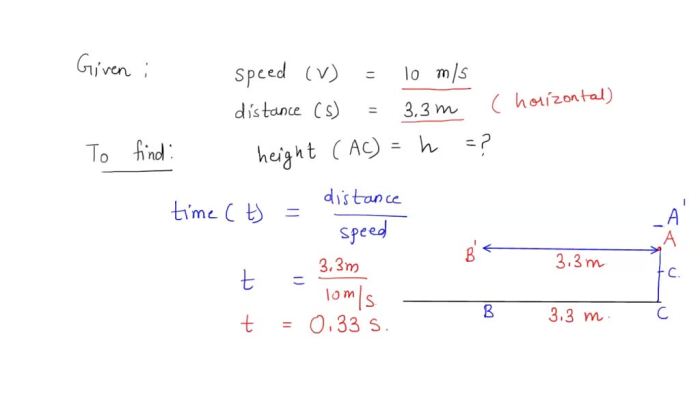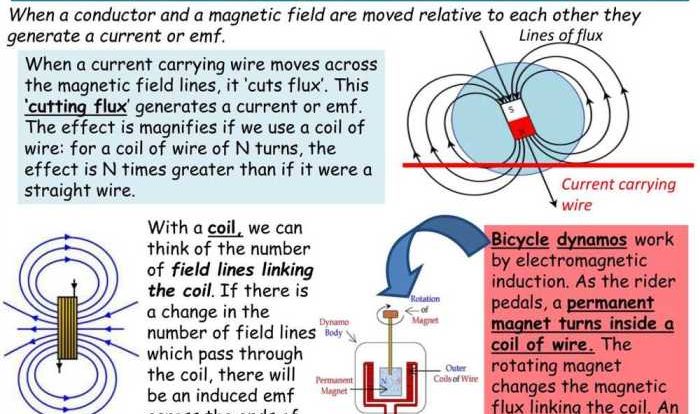When a dart is thrown horizontally, it embarks on a captivating journey that exemplifies the interplay of physics and motion. This article delves into the intricate world of a dart’s trajectory, exploring its kinematics, energy transformations, and practical applications.
As the dart embarks on its horizontal flight, it experiences a constant horizontal velocity while gravity exerts a relentless downward force, shaping its trajectory into a graceful parabola.
Introduction: A Dart Is Thrown Horizontally

A dart thrown horizontally is a projectile that moves in a parabolic trajectory under the influence of gravity. The initial conditions are as follows:
- The dart is thrown with a horizontal velocity.
- The dart is released at a height h above the ground.
- The acceleration due to gravity is g.
These assumptions allow us to simplify the analysis of the dart’s motion.
Kinematics of the Dart

The kinematics of the dart describes the motion of the dart as it is thrown horizontally. The dart’s motion can be described in terms of its horizontal and vertical components of velocity.
Horizontal Component of Velocity
The horizontal component of velocity is the velocity of the dart in the horizontal direction. This component of velocity is constant throughout the dart’s flight, as there is no force acting on the dart in the horizontal direction.
A dart is thrown horizontally, its trajectory a testament to the unwavering principles of physics. Similarly, in the realm of faith, the six pillars of iman serve as the unwavering foundation upon which our beliefs and actions rest. As the dart sails through the air, its path guided by the laws of motion, so too do the pillars of iman guide our hearts and minds towards the ultimate destination of enlightenment.
Vertical Component of Velocity
The vertical component of velocity is the velocity of the dart in the vertical direction. This component of velocity is constantly changing due to the force of gravity acting on the dart. The acceleration due to gravity is g = 9.8 m/s^2.
Equations of Motion
The equations of motion for the dart can be derived from the kinematics of the dart. The equations of motion are:
- Horizontal position: x = v xt
- Vertical position: y = v yt – 1/2gt^2
- Horizontal velocity: v x= constant
- Vertical velocity: v y= v y0– gt
where:
- x is the horizontal position of the dart
- y is the vertical position of the dart
- v xis the horizontal component of velocity
- v yis the vertical component of velocity
- v y0is the initial vertical component of velocity
- t is the time
- g is the acceleration due to gravity
Effect of Gravity
Gravity has a significant effect on the trajectory of the dart. Gravity causes the dart to accelerate downward, which causes the vertical component of velocity to increase. This, in turn, causes the dart to follow a parabolic trajectory.
Trajectory of the Dart

The trajectory of a dart thrown horizontally is a parabolic curve. This is because the dart is subject to two forces: gravity, which pulls it downward, and the initial velocity, which propels it forward. The combination of these two forces causes the dart to follow a curved path.
The range of a dart is the horizontal distance it travels before it hits the ground. The maximum height of a dart is the highest point it reaches above the ground. Both the range and the maximum height of a dart are determined by its initial velocity and the angle at which it is thrown.
Factors Affecting the Dart’s Trajectory
- Initial velocity:The initial velocity of a dart is the speed at which it is thrown. The greater the initial velocity, the longer the range of the dart and the higher its maximum height.
- Angle of projection:The angle of projection is the angle at which a dart is thrown. The angle of projection affects the range and maximum height of the dart. The optimal angle of projection for maximum range is 45 degrees.
- Air resistance:Air resistance is the force that opposes the motion of a dart through the air. Air resistance reduces the range and maximum height of a dart.
- Gravity:Gravity is the force that pulls a dart downward. Gravity is the primary factor that determines the shape of a dart’s trajectory.
Energy Considerations

The dart’s energy undergoes transformations during its flight. Understanding these changes helps us grasp the interplay between kinetic and potential energy.
As the dart is released, it possesses kinetic energy due to its horizontal velocity. Simultaneously, it gains gravitational potential energy as it rises.
Energy Transformations
- At the highest point of its trajectory, the dart’s kinetic energy is momentarily zero, while its potential energy is at its maximum.
- As the dart descends, its potential energy is converted back into kinetic energy, resulting in an increase in velocity.
Effect of Air Resistance
Air resistance exerts a force that opposes the dart’s motion, causing a gradual decrease in its kinetic energy. This energy is dissipated as heat and sound, leading to a reduction in the dart’s velocity and a shorter trajectory.
Applications of the Dart’s Motion

The principles governing a dart’s motion extend beyond the realm of recreational games. They find practical applications in diverse fields, including sports, engineering, and ballistics, where understanding the trajectory and behavior of projectiles is crucial.
In sports, analyzing a dart’s motion is essential for optimizing performance. Darts players employ techniques like adjusting the angle of release and the amount of force applied to achieve the desired trajectory. Similarly, in archery, understanding the parabolic path of an arrow helps archers fine-tune their aim and compensate for factors like wind resistance.
Engineering, A dart is thrown horizontally
In engineering, the principles of projectile motion are applied in the design and development of various systems. For instance, in designing aircraft, engineers must consider the trajectory of the aircraft to ensure efficient flight and safe landings. Similarly, in the field of ballistics, understanding the motion of projectiles is crucial for designing weapons and predicting the trajectory of bullets or missiles.
Limitations and Challenges
While the principles of dart’s motion provide a framework for understanding projectile behavior, there are limitations and challenges in applying these principles in real-world scenarios.
- Environmental factors:Wind resistance, air density, and gravity can significantly alter the trajectory of a dart, making it difficult to predict the exact path it will take.
- Imperfect release:The release of a dart is often not perfectly consistent, introducing variations in the initial velocity and angle, which can affect the trajectory.
- Complex trajectories:In certain situations, such as when a dart is thrown at a moving target or in the presence of crosswinds, the trajectory can become highly complex, making it challenging to predict accurately.
Answers to Common Questions
What factors influence the trajectory of a dart?
The initial velocity, angle of projection, and air resistance all play significant roles in shaping the dart’s trajectory.
How does gravity affect a dart’s motion?
Gravity exerts a constant downward force on the dart, causing it to follow a parabolic path.
What is the range of a dart?
The range refers to the horizontal distance traveled by the dart before it strikes the ground.
